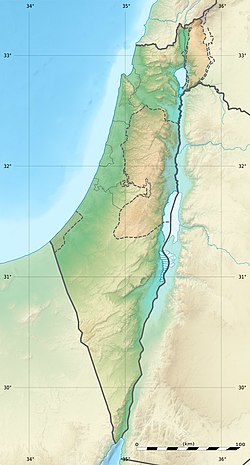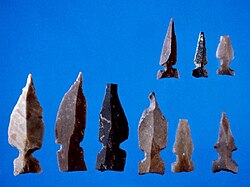גשר | |
| Location | 12 kilometres (7.5 mi) South of the Sea of Galilee |
|---|---|
| Region | Jordan Valley |
| Coordinates | 32°36′10″N35°33′20″E / 32.602778°N 35.555556°E |
| Type | Tell |
| Part of | Village |
| Area | 18 square metres (190 sq ft) (excavated by Garfinkel) |
| History | |
| Material | Lake bed |
| Founded | c. 8000 BC |
| Abandoned | c. 8000 BC |
| Periods | PPNA, Neolithic |
| Cultures | Khiamian |
| Site notes | |
| Excavation dates | 1986-1987 2002-2004 |
| Archaeologists | Yosef Garfinkel Susan Cohen |
| Condition | Ruins |
| Public access | Yes |
Gesher is an archaeological site located on the southern bank of Nahal Tavor, near kibbutz Gesher in the central Jordan Valley of Israel. It bears signs of occupation from two periods, the very early Neolithic and the Middle Bronze Age. The site was first excavated between 1986 and 1987 by Yosef Garfinkel of the Hebrew University of Jerusalem and between 2002 and 2004 by Susan Cohen of Montana State University. The average of 4 radiocarbon dating results suggested inhabitation of the settlement around 8000 BC. [1]



